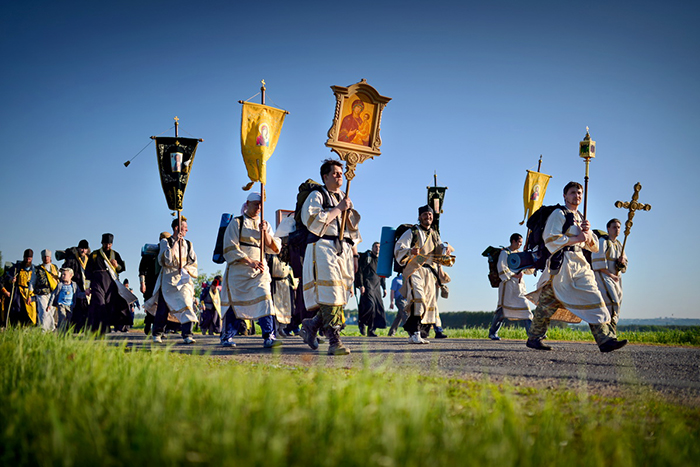
Browse our online store and find the items that inspire you >>
The custom of wearing black among the clergy and monastics formed over time, and did not take root everywhere in the Church. For example, as we read in The Lausiac History, a fifth-century description of the life of the Desert Fathers written by Palladius of Galatia, Abba Apollonius and about 500 brothers living and sharing meals with him in Thebaid always wore white robes. Elsewhere, where Palladius writes about the appearance of the monastic brethren, he remarks that their clothing was made of undyed flax, to be simple and practical.
However, the Blessed Jerome of Stridon recalls in his late fourth-century writings that some ascetics preferred to wear darker garments, ranging from greyish and brown to black. As follows from his narrations, the custom of wearing dark colours was most common in the western regions of the Roman Empire. As early as the fourth and fifth centuries, it also spread among the monks of the Eastern Church. There are numerous accounts of monks clothed in black in the Eastern Mediterranean, from Constantinople to Syria, Palestine and as far away as Egypt. Black garments were also preferred in Persian monasticism.
According to some scholars, the habit of wearing black came to monasticism from the Greek philosophers. The Blessed Jerome, for example, complained in one of his letters from Rome: “We do not wear silk, others call us monks because of this; but if we are not dressed in white, immediately everyone around says: “They are Greeks in disguise!” In Ancient Rome, Greek philosophers were distinct by their dark cloaks. The monks who also wore black were also called Greeks, with some derision. Initially, the black colour underlined a person’s distinctness, otherworldliness, a life of contemplation and the spirit. With time, black monastic attire came to signify dispassionateness, separation from the world and belonging to the life of angels in heaven. As stated in the lives of the martyrs Galaktion and Epistemias: “Those are called the likes of angels who, clothed in the black pallium, have cast away the world and all worldly things, live in celibacy and seek to be like Christ”.
Gradually, black became so widespread among monks that black garments became status symbols, i.e. the signs of belonging to monastics, more generally to the clergy.
Today, monks and non-tonsured clergy wear black outside a church service. To them, it is a reminder of their particular role, the need to avoid passions and taking sides, and their life mission of being with Christ and serving Him. Priests wear black as their everyday attire, but black liturgical vestments are used rarely – typically on non-feast days during the Great Lent. Throughout the rest of the church year, priests wear vestments of different colours, depending on the colour theme of the feast day.
Translated by The Catalogue of Good Deeds
Source: https://foma.ru/pochemu-vse-svjashhenniki-v-chernoj-odezhde.html





I have made a vow to always wear black or purple